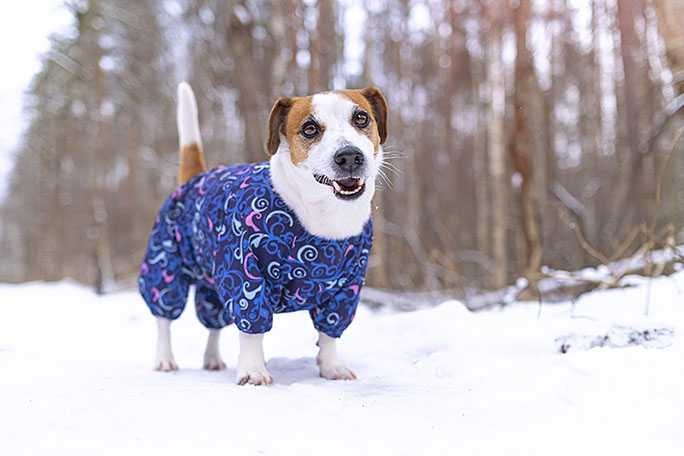Prevent winter’s biting effects
Advertisement
Read this article for free:
or
Already have an account? Log in here »
To continue reading, please subscribe:
Monthly Digital Subscription
$0 for the first 4 weeks*
- Enjoy unlimited reading on winnipegfreepress.com
- Read the E-Edition, our digital replica newspaper
- Access News Break, our award-winning app
- Play interactive puzzles
*No charge for 4 weeks then price increases to the regular rate of $19.00 plus GST every four weeks. Offer available to new and qualified returning subscribers only. Cancel any time.
Monthly Digital Subscription
$4.75/week*
- Enjoy unlimited reading on winnipegfreepress.com
- Read the E-Edition, our digital replica newspaper
- Access News Break, our award-winning app
- Play interactive puzzles
*Billed as $19 plus GST every four weeks. Cancel any time.
To continue reading, please subscribe:
Add Free Press access to your Brandon Sun subscription for only an additional
$1 for the first 4 weeks*
*Your next subscription payment will increase by $1.00 and you will be charged $16.99 plus GST for four weeks. After four weeks, your payment will increase to $23.99 plus GST every four weeks.
Read unlimited articles for free today:
or
Already have an account? Log in here »
Hey there, time traveller!
This article was published 18/07/2022 (1238 days ago), so information in it may no longer be current.
Even the most experienced veterinarian can get disturbed when observing the excruciating pain caused by pets that are exposed to the Arctic chill too long.
“I just saw a cat the other day that had frostbite affecting all four paw pads and its ear tips,” says Dr. Jonas Watson of the Grant Park Animal Hospital. It seemed like it was likely a house pet that somehow escaped out the door and got caught in the cold. Someone brought the cat in when they saw it alone in the cold.
“It’s a real heartbreaker to see them trying to walk with their pads raw after peeling off (due to frostbite) and the cat in a lot of discomfort.”

Watson gave the cat antibiotics, pain-control medicine and anti-inflammatories.
The Winnipeg Humane Society sees plenty of these cases, too. Its website explains that cats and dogs are at risk of such severe injuries, even death, if they are left exposed in the biting cold too long. Pets’ ears and paws are especially susceptible to frostbite. It’s a condition which requires immediate attention from a veterinarian. Frostbite can also affect their tails, scrotum and mammary glands.
A fellow dog lover, Catherine, (who asked that her surname not be used) stresses about her mini-dachshund, Maith, during the most frigid climes.
“What worries me most is that he will get frostbite and he tends to have a difficult time warming up,” Catherine says. “I also worry about him not having fresh air and being bored. I also sometimes worry about him getting hypothermia as he does not do well in the cold weather, even all dressed up.”
Short-haired, young and older pets are the most vulnerable to extreme cold. A dog that gets too cold can suffer from hypothermia, a condition that happens when its body temperature falls below normal. It’s life threatening.
Owners need to monitor their pets whenever they’re outdoors in the coldest climate and not be left out for any length of time. And make sure their cats don’t escape.
Short-haired, young and older pets are the most vulnerable to extreme cold.
“Short-haired dogs can benefit from wearing coats and sweaters, and boots can help protect their pads,” Watson says
It’s advice Catherine follows. “I have sweaters and a jacket for (Maith),” she says. “I have tried different boots but have not been able to find ones that he likes. He also has a hat which he does not mind wearing.”
“There are also some products out there that can keep snow and ice from adhering to their toes and feet,” Watson says. With no protection to their feet, dogs can also pick up salt, antifreeze and other chemicals outside. “If they lick it off their paws, it could lead to gastrointestinal issues,” Watson says. So, those pads should be cleaned as soon as possible.
“Generally speaking, you’ve got to assess it yourself — if it’s too cold for you, it may be too cold for your dog,” Watson says. “But some dogs won’t be fazed. A Husky is perfectly happy in this weather. But a little Pomeranian may be too cold to just go out for a minute to urinate.”
Some small dog owners actually have the equivalent of a litter box for their pets, so they don’t have to brave the weather to eliminate, Watson says.
Shivering and lifting a leg are indications that a a pet is getting too cold.
“People should not let them stay out too long in the cold,” he adds. “Some pets don’t want to stay out that long.”
Shivering and lifting a leg are indications that a pet is getting too cold.
Outdoor dogs need protection from the weather, such as a doghouse that is warm and dry with a door flap to keep cold winds out. Unfrozen water needs to be available for them. They’ll also need more calories to stay warm.
On the other hand, indoor pets need fewer calories and dogs kept indoors need play time for exercise and mental stimulation like food puzzles to prevent boredom. Like humans, they should still get fresh air and sunlight whenever possible.
“To get (Maith) out of the house, I take him to Pet Valu and the car wash where they allow me to bring him in,” says Catherine, adding that the pandemic has prevented them from visiting friends.

For further tips on weather-related pet care, consult your veterinarian. The WHS website has solid tips, too: Keeping Your Pet Warm this Winter: Cold Weather Safety Tips | Winnipeg Humane Society

